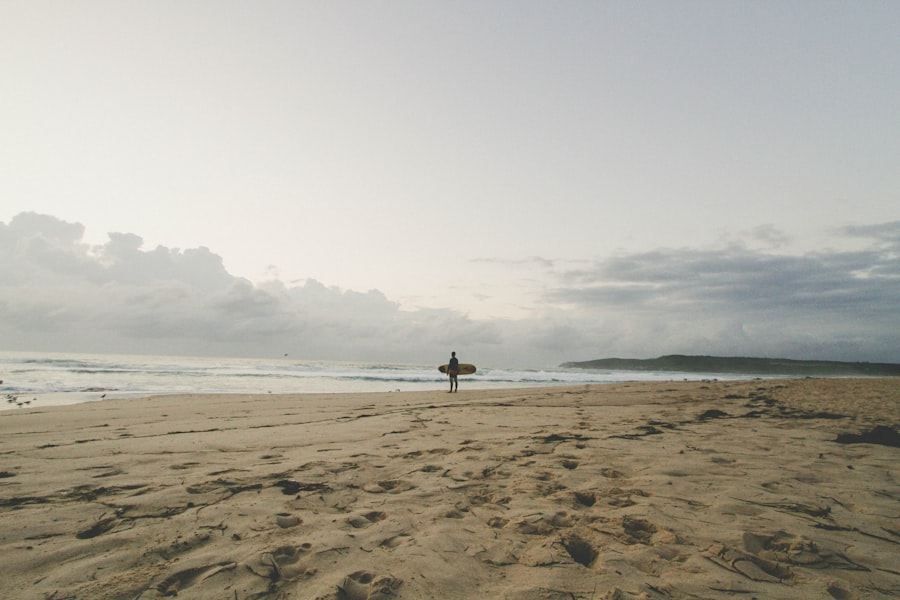Download links
How to install Riding the Waves: Exploring the Thrill of PH630 Surfing APK?
1. Tap the downloaded Riding the Waves: Exploring the Thrill of PH630 Surfing APK file.
2. Touch install.
3. Follow the steps on the screen.
Description
The history of PH630 surfing is a fascinating journey that intertwines cultural evolution, technological advancements, and the sheer joy of riding waves. The roots of surfing can be traced back to ancient Polynesian cultures, where it was not merely a sport but a significant aspect of social and spiritual life. The earliest records of surfing date back to the 12th century in Hawaii, where it was known as “he’e nalu,” meaning “to slide on water.” The Hawaiian nobility would often engage in this activity, showcasing their prowess and skill, while also using it as a means of connecting with the ocean and their ancestors.
This early form of surfing involved wooden boards, which were often heavy and cumbersome, yet they provided a unique experience that laid the groundwork for what would evolve into modern surfing. As surfing spread beyond the shores of Hawaii, it began to take on various forms influenced by local cultures. In the early 20th century, surfing made its way to California, where it was embraced by beachgoers and became a symbol of the laid-back lifestyle associated with the West Coast.
The introduction of lighter materials for surfboards, such as foam and fiberglass, revolutionized the sport, making it more accessible to a broader audience. The 1960s marked a significant turning point in surfing history, as it became intertwined with youth culture and the burgeoning surf music scene. Iconic films like “Endless Summer” captured the essence of the surfing lifestyle, inspiring countless individuals to take to the waves.
Today, PH630 surfing has evolved into a global phenomenon, with professional competitions, advanced technology in equipment, and a vibrant community that celebrates the sport’s rich heritage.
Key Takeaways
- PH630 Surfing has a rich history that dates back to ancient Polynesian cultures and has evolved into a popular modern-day sport and lifestyle.
- The basics of PH630 Surfing involve using specialized equipment such as a surfboard and mastering techniques like paddling, popping up, and riding waves.
- Some of the best PH630 Surfing spots around the world include famous destinations like Hawaii, Indonesia, Australia, and California, offering a variety of waves for surfers of all levels.
- Safety tips for PH630 Surfing include being aware of weather and ocean conditions, wearing appropriate safety gear, and knowing how to handle yourself in the water.
- PH630 Surfing offers numerous health benefits, including improved cardiovascular fitness, muscle strength, mental relaxation, and a sense of connection to nature.
- PH630 Surfing culture is a vibrant community that embraces a laid-back lifestyle, environmental awareness, and a deep appreciation for the ocean and its waves.
The Basics of PH630 Surfing: Equipment and Techniques
Surfboard Types and Accessories
At its core, surfing involves riding waves on a surfboard, which comes in various shapes and sizes tailored to different styles and conditions. The most common types of surfboards include shortboards, longboards, fish boards, and funboards. Shortboards are typically around 5 to 7 feet long and are designed for high-performance maneuvers in powerful waves. Longboards, on the other hand, can exceed 9 feet in length and are favored for their stability and ease of paddling, making them ideal for beginners or those looking for a more relaxed ride.
Essential Accessories
In addition to the surfboard itself, surfers also utilize various accessories that enhance their experience. A wetsuit is often essential for maintaining body temperature in colder waters, while leashes keep the board attached to the surfer, preventing it from drifting away after a wipeout. Wax is applied to the top of the board to provide grip and prevent slipping during rides.
Surfing Techniques
Techniques in PH630 surfing range from paddling out to catching waves and executing maneuvers. Paddling involves lying on the board and using one’s arms to propel forward through the water. Timing is crucial when catching waves; surfers must position themselves correctly to ride the wave’s energy without being caught inside or wiped out.
The Best PH630 Surfing Spots: Exploring the World’s Top Destinations

The allure of surfing is amplified by the diverse array of locations that offer exceptional waves and breathtaking scenery. One of the most iconic destinations is Pipeline on Oahu’s North Shore in Hawaii. Known for its powerful waves that break over a shallow reef, Pipeline attracts experienced surfers from around the globe who seek the thrill of riding its famous barrels.
The wave’s intensity is matched only by its beauty, making it a must-visit for any serious surfer. Another renowned spot is Jeffrey’s Bay in South Africa, celebrated for its long right-hand point break that offers some of the best rides in the world. The wave can provide rides lasting up to 300 meters under optimal conditions, making it a favorite among professional surfers.
The surrounding landscape adds to its charm, with stunning cliffs and pristine beaches that create an idyllic backdrop for surf enthusiasts. In Australia, Gold Coast’s Snapper Rocks is another hotspot known for its consistent waves and vibrant surf culture. The annual Quiksilver Pro competition draws top talent from around the world, showcasing the region’s status as a premier surfing destination.
Safety Tips for PH630 Surfing: How to Stay Safe in the Water
| Safety Tips for PH630 Surfing |
|---|
| 1. Always wear a leash |
| 2. Know your limits and stay within them |
| 3. Check the surf conditions before entering the water |
| 4. Respect other surfers and water users |
| 5. Be aware of rip currents and how to escape them |
| 6. Stay hydrated and protect yourself from the sun |
| 7. Learn basic first aid and CPR |
Safety is paramount in PH630 surfing, as the ocean can be unpredictable and potentially dangerous. One of the first steps to ensuring safety is understanding local conditions before entering the water. This includes checking wave heights, currents, tides, and weather conditions.
Many beaches have lifeguards who can provide valuable information about current surf conditions and potential hazards. Additionally, surfers should familiarize themselves with any local rules or guidelines regarding surf etiquette to avoid collisions or accidents with other surfers. Another critical aspect of safety is wearing appropriate gear.
While wetsuits are essential for warmth in colder waters, helmets can also be beneficial in certain conditions where there is a risk of hitting rocks or other surfers. It’s advisable for beginners to surf in designated areas where conditions are more manageable and to always surf with a buddy whenever possible. Understanding how to perform basic self-rescue techniques can also be invaluable; this includes knowing how to hold onto your board if you wipe out and how to swim back to shore against strong currents.
The Health Benefits of PH630 Surfing: Physical and Mental Well-being
PH630 surfing offers numerous health benefits that extend beyond mere enjoyment of the sport. Physically, surfing is an excellent full-body workout that engages multiple muscle groups. Paddling out requires upper body strength and endurance, while balancing on the board engages core muscles and improves stability.
Riding waves also enhances leg strength as surfers shift their weight and maneuver through different positions on their boards. Regular participation in surfing can lead to improved cardiovascular health due to increased heart rate during paddling and riding. Beyond physical fitness, surfing has profound mental health benefits as well.
The rhythmic nature of riding waves can induce a meditative state, allowing surfers to connect with nature and experience mindfulness in action. The ocean’s vastness often provides a sense of freedom and escape from daily stressors. Furthermore, being part of a vibrant surf community fosters social connections that can enhance emotional well-being.
Engaging with fellow surfers creates opportunities for camaraderie and support, which can be particularly beneficial for mental health.
PH630 Surfing Culture: Embracing the Lifestyle and Community

The culture surrounding PH630 surfing is rich and multifaceted, encompassing not just the act of riding waves but also a lifestyle that celebrates freedom, adventure, and community. Surfers often develop a deep connection with their local beaches and ocean environments, fostering a sense of stewardship towards these natural resources. This connection is reflected in various cultural expressions such as art, music, and fashion that celebrate surf culture.
Surfing events and competitions play a significant role in building community among surfers. From local contests to international championships like the World Surf League events, these gatherings create opportunities for surfers to showcase their skills while connecting with others who share their passion. Additionally, surf schools and camps have emerged worldwide, promoting inclusivity by introducing newcomers to the sport regardless of age or skill level.
This emphasis on community extends beyond just surfing; many surfers engage in environmental activism aimed at preserving ocean health and advocating for sustainable practices within their communities. In summary, PH630 surfing is not merely a sport; it embodies a lifestyle that intertwines physical activity with mental well-being while fostering community connections rooted in shared experiences and respect for nature. As it continues to evolve globally, its rich history remains an integral part of what makes surfing such an enduring passion for many individuals around the world.
If you’re a fan of surfing, you may also be interested in checking out the article on Farlight 84, a futuristic battle royale game set in a post-apocalyptic world. You can read more about it here.
FAQs
What is surfing?
Surfing is a water sport in which a person rides a board on the crest and face of a breaking wave.
What equipment do I need for surfing?
The basic equipment for surfing includes a surfboard, leash, wetsuit, and wax.
What are the different types of surfboards?
There are several types of surfboards, including shortboards, longboards, fish boards, and funboards, each designed for different wave conditions and riding styles.
What are the best surfing spots in the world?
Some of the best surfing spots in the world include Pipeline in Hawaii, Jeffreys Bay in South Africa, Teahupo’o in Tahiti, and Banzai Pipeline in Oahu, Hawaii.
What are the safety precautions for surfing?
Safety precautions for surfing include wearing a leash, being aware of rip currents, avoiding surfing alone, and knowing your limits in the water.
What are some popular surfing competitions?
Popular surfing competitions include the World Surf League Championship Tour, the Vans Triple Crown of Surfing, and the Quiksilver Pro Gold Coast.





